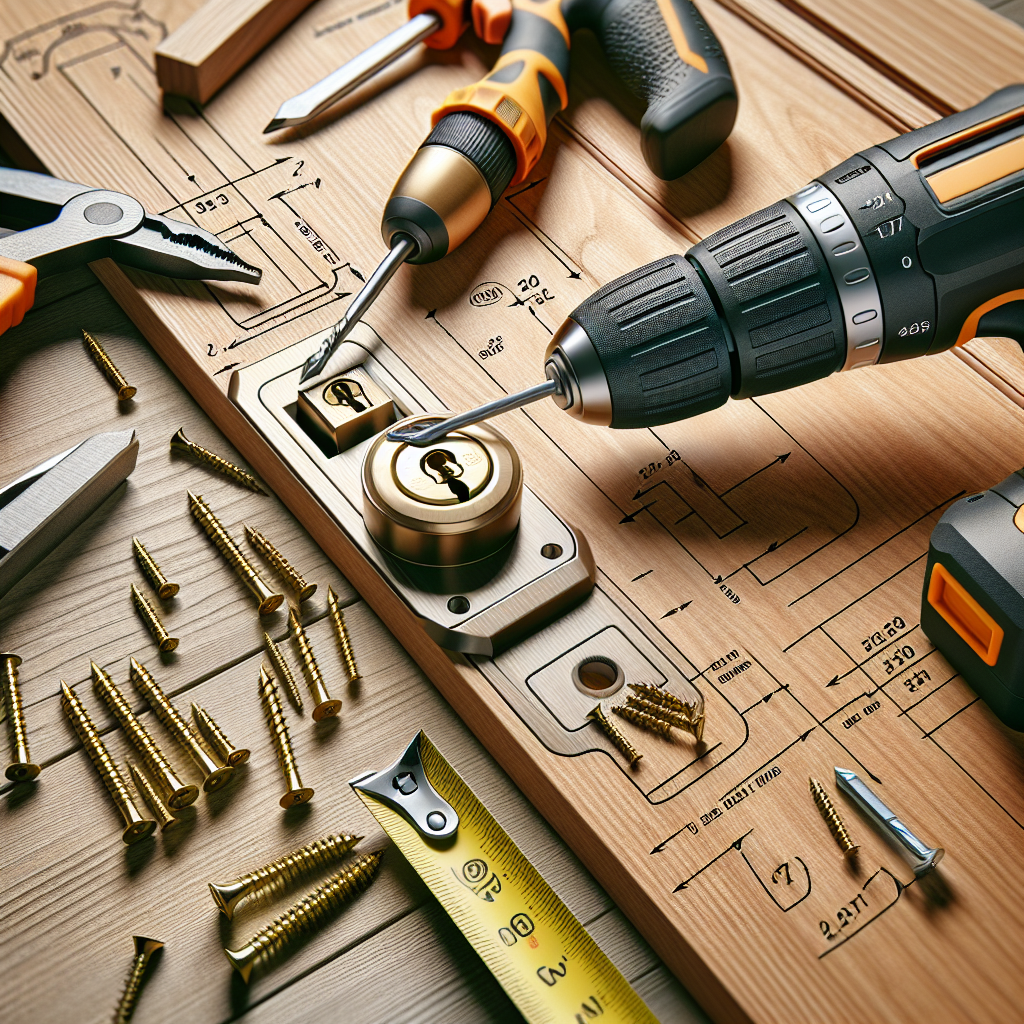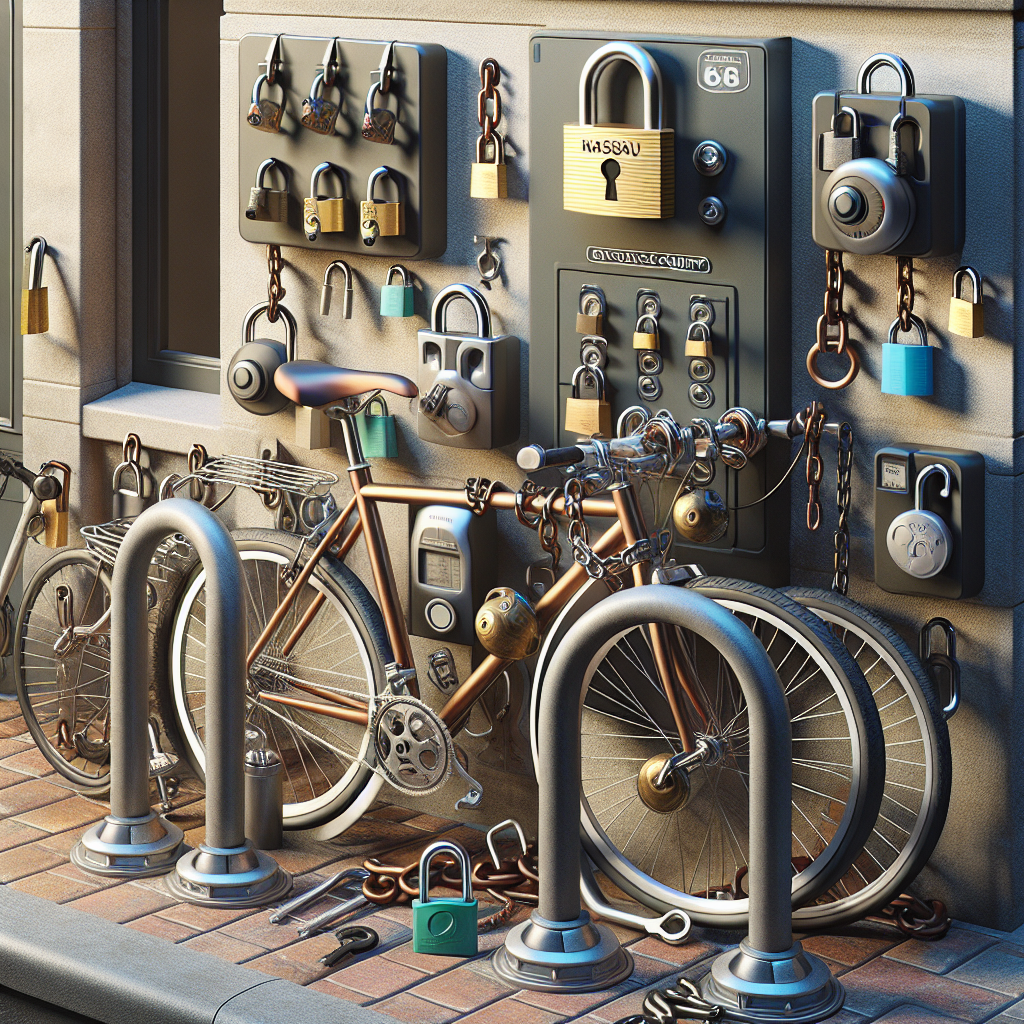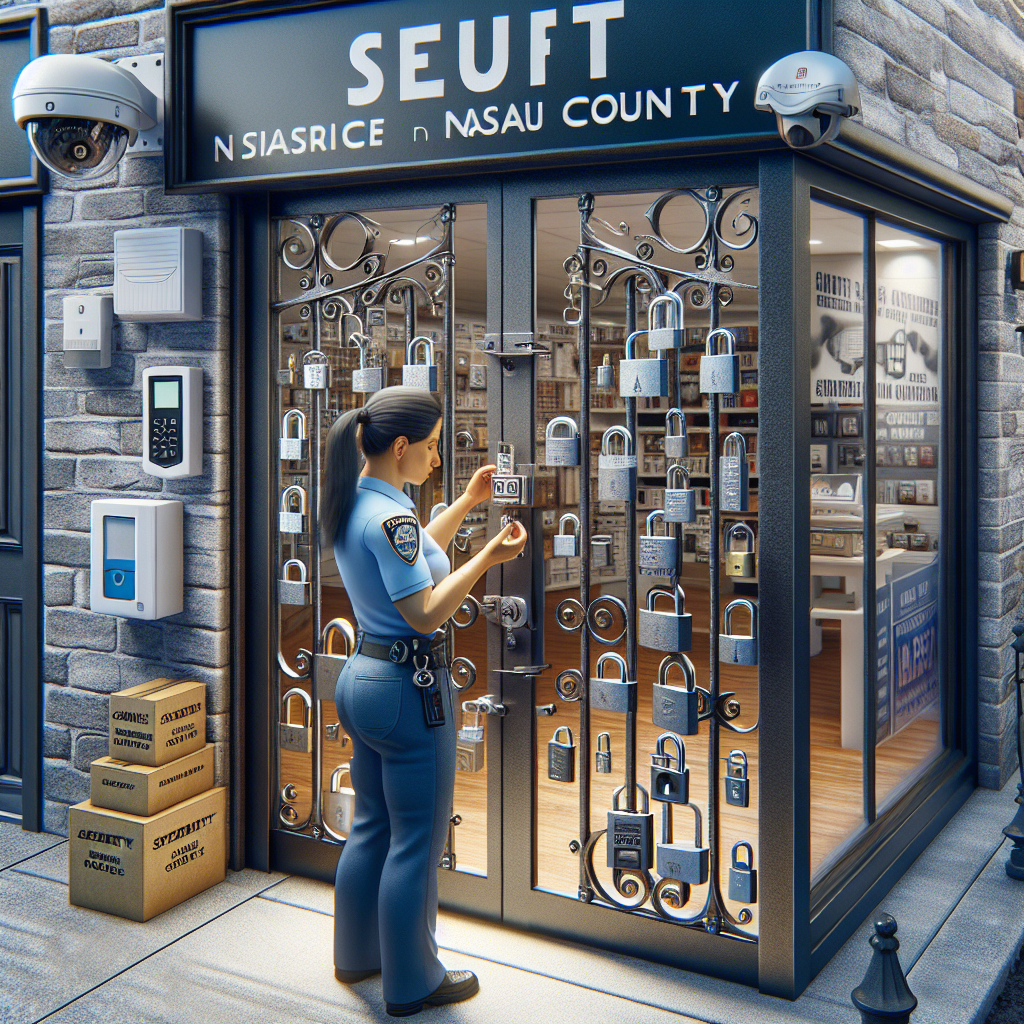In the realm of home security, a deadbolt stands as a stalwart guardian against intrusion, significantly enhancing the protective measures of any household in Nassau County. Unlike standard spring bolt locks, which can be easily compromised, deadbolts require a key or thumb turn to move the lock’s heavy bolt into the door frame, thereby offering a higher degree of security. Residents of Nassau County understand the coastal beauty of their environment is matched only by the seriousness with which they approach the safety of their homes and loved ones. This prevalence of deadbolts is not only attributed to their robust mechanism but also to the peace of mind they afford homeowners when properly installed.
As we delve deeper into Nassau County’s guide to deadbolt installation, it becomes evident that precision and professional expertise are critical components of fortifying a home. In the forthcoming sections, we plan to unlock the key considerations residents should make before selecting a deadbolt. From understanding the distinct types of deadbolts available in the market to the intricate details that make each type suitable for different door specifications, our guide is tailored to ensure you’re well-equipped with the necessary information. Moreover, we will explore the local regulations and standards that Nassau County homeowners must adhere to when installing deadbolts, ensuring that your security enhancements also comply with regional requirements. Keep reading for these pivotal insights that aim to not only inform but empower Nassau County residents in their pursuit of optimal home security.
Key Takeaways
1. Deadbolts offer a higher level of security compared to standard doorknob locks, as they are more resistant to forced entry techniques such as kicking, picking, and crowbar attacks. Nassau County recommends residents install deadbolts as an essential step in improving home security.
2. When selecting a deadbolt for installation, choose one that has at least a one-inch long horizontal bolt. This length ensures that the bolt extends far enough into the door frame to provide adequate protection. A grade 1 or grade 2 deadbolt is advised for maximum security, as established by the American National Standards Institute (ANSI).
3. Proper installation is crucial for a deadbolt to be effective. The door frame should be reinforced with a metal strike plate, and the screws used to secure the strike plate and deadbolt should be long enough—at least 3 inches—to anchor into the studs of the door frame. This prevents the door from being easily kicked in.
4. The positioning of the deadbolt on the door must be correct for optimal security. It should be placed at least 6 inches above the doorknob, which minimizes the chance of both being compromised simultaneously. This also ensures that the door’s integrity isn’t weakened by having two holes drilled too closely together.
5. For doors with windows or within 40 inches of one, consider installing a double-cylinder deadbolt that requires a key to open from both the inside and the outside. This prevents an intruder from breaking the window, reaching inside, and simply turning the thumb turn to unlock the deadbolt. However, be mindful that double-cylinder deadbolts can pose a safety issue during an emergency if the key is not readily accessible.
How Do You Install a Deadbolt in Nassau County?
Understanding Nassau County Building Codes for Deadbolts
Before installing a deadbolt in Nassau County, it is crucial to familiarize yourself with the local building codes. These regulations ensure that your deadbolt meets the safety standards required for home security. They can specify the acceptable types of deadbolts, installation methods, and any other safety considerations you need to be aware of. Consulting Nassau County’s official building codes or seeking advice from a professional locksmith can help ensure your installation adheres to the necessary requirements.
Choosing the Right Deadbolt for Your Door
Selecting an appropriate deadbolt is the first practical step in the installation process. There are several types of deadbolts, including single cylinder, double cylinder, and keyless electronic versions. Each type offers a different level of security and convenience. For optimal security, a Grade 1 deadbolt, as recognized by the American National Standards Institute (ANSI), is recommended. Furthermore, it is essential to consider the door material, thickness, and style to ensure the deadbolt will fit properly and function correctly.
Tools and Materials Needed for Deadbolt Installation
Equipping yourself with the right tools is paramount for a successful deadbolt installation. Necessary tools may include a drill, drill bits, hole saw, chisel, screwdriver, and a tape measure. Additionally, your deadbolt kit should come with all the essential hardware, including the lock mechanism, strike plate, and screws. Before starting, confirm that you have all the needed materials and that they’re in good condition.
Step-by-Step Guide to Installing a Deadbolt
Installation involves several key steps. Begin by marking the position on the door where the deadbolt will be installed. Use a hole saw to drill the main hole for the lock body, and then a smaller drill bit for the hole through the edge of the door for the bolt. Next, chisel out a recess for the strike plate on the door frame. After the holes are prepared, insert the deadbolt into place, secure it with the provided screws, and install the strike plate into the door frame. Detailed instructions are usually provided with the deadbolt kit, which should be followed closely for proper installation.
Troubleshooting Common Deadbolt Installation Issues
It’s not unusual to encounter challenges during the installation process. Common issues include holes that are too small, misaligned components, or a bolt that doesn’t operate smoothly. Using the right techniques and tools, such as re-drilling or adjusting the alignment, can correct these problems. It’s also worth noting that if the door or frame is damaged, it may require repair before a deadbolt can be successfully installed.
Maintaining Your Deadbolt for Long-Term Security
After installation, regular maintenance is key to ensure your deadbolt continues to provide a high level of security. This includes checking the alignment periodically, lubricating the lock mechanism, and tightening any loose screws. Also, if you notice any wear or damage over time, it is important to address these issues promptly to maintain the integrity of your home’s security.
Professional Deadbolt Installation Services in Nassau County
While some homeowners may feel confident in installing a deadbolt themselves, others may prefer to hire a professional. Professional locksmiths in Nassau County can ensure the job is done efficiently and in compliance with local building codes. Hiring a professional also provides the advantage of having an expert who can offer personalized advice on security and the latest locking technologies.
When is the Best Time to Upgrade Your Deadbolt?
Upgrading your deadbolt should be considered if you move into a new home, after a break-in, or if your current lock is old or shows signs of wear. On top of that, advances in lock technology, such as smart locks with enhanced security features, may prompt you to upgrade to better secure your home.
Are There Deadbolt Installation Regulations Specific to Nassau County?
- Check Nassau County’s official building and safety codes regarding deadbolt installations.
- Ensure the deadbolt you select complies with the local requirements and standards.
- Schedule inspections if required by Nassau County law to validate the installation of your deadbolt.
- Consider using deadbolts that are keyed-alike for convenience if installing multiple locks.
- When upgrading locks, review Nassau County’s guidelines on electronic and smart lock installations.
What Types of Deadbolts are Best Suited for Homes in Nassau County?
Different types of deadbolts provide varying levels of security. In Nassau County, it is advisable to opt for single or double cylinder deadbolts that meet the ANSI Grade 1 or 2 standards for maximum security against common break-in methods.
Is a Permit Required for Deadbolt Installation in Nassau County?
No permit is usually required for deadbolt installation in Nassau County. However, it is essential to consult with local building codes and regulations to ensure compliance, especially for properties within certain historical districts or homeowners’ associations.
How Do I Choose a Reliable Locksmith for Deadbolt Installation?
When choosing a locksmith in Nassau County, look for licensed professionals with positive reviews, and confirm that they are insured and bonded. Referrals from friends or family can also be a reliable way to find a trustworthy locksmith.
Can I Install a Deadbolt on a Metal or PVC Door?
Yes, deadbolts can be installed on both metal and PVC doors in Nassau County. However, the installation process may vary, and it is crucial to use the correct tools and follow manufacturer’s instructions specifically designed for the type of door material.
What is the Average Cost of Deadbolt Installation in Nassau County?
The cost of deadbolt installation can vary depending on the type of lock and the complexity of the installation. On average, homeowners in Nassau County might expect to pay between $100 to $250 for professional installation.
How Do Smart Deadbolts Differ from Traditional Deadbolts?
Smart deadbolts offer features like keyless entry, remote locking/unlocking, and integration with home automation systems. Traditional deadbolts, on the other hand, require a physical key for operation.
Are Deadbolts Compliant with Fire Safety Regulations in Nassau County?
Deadbolts installed in Nassau County should comply with fire safety regulations, ensuring they do not impede exits in case of an emergency. It is recommended to consult with a professional to ensure that your deadbolt meets all local fire safety requirements.
What Maintenance is Required for Deadbolts?
Regular maintenance for deadbolts includes periodic lubrication of moving parts, tightening any loose screws, and checking for any signs of wear or damage to ensure proper function and security.
Should I Change My Deadbolt When I Move to a New Home in Nassau County?
For security reasons, it is considered a best practice to change the deadbolts when moving into a new home in Nassau County. This ensures that you have the sole access to your property.
Can Deadbolts Be Picked or Bumped Open?
While no lock is impervious to picking or bumping, high-quality deadbolts that comply with ANSI Grade 1 or Grade 2 standards offer a higher resistance to such methods. They are designed to provide a greater challenge for potential intruders.
Final Thoughts
Installing a deadbolt in Nassau County is a foundational step in safeguarding your home. Selecting the right type and ensuring proper installation are critical to ensuring that your deadbolt provides the security you rely on. Whether you choose a traditional or a smart deadbolt, the investment in a high-quality locking mechanism can bring peace of mind and protect your home from unauthorized entry. Remember that while installation can be a DIY project, consulting with or hiring a professional locksmith can ensure that the job is done right. Keep in mind local codes and standards, and be prepared to maintain your locks over time for ongoing security.
Ultimately, the security of your home in Nassau County is paramount, and a sturdy deadbolt acts as the first line of defense. By staying informed about the options and requirements for deadbolt installation, residents of Nassau County can make educated decisions to enhance their home security effectively. Stay vigilant, choose wisely, and maintain your locks to keep your home and loved ones safe.







